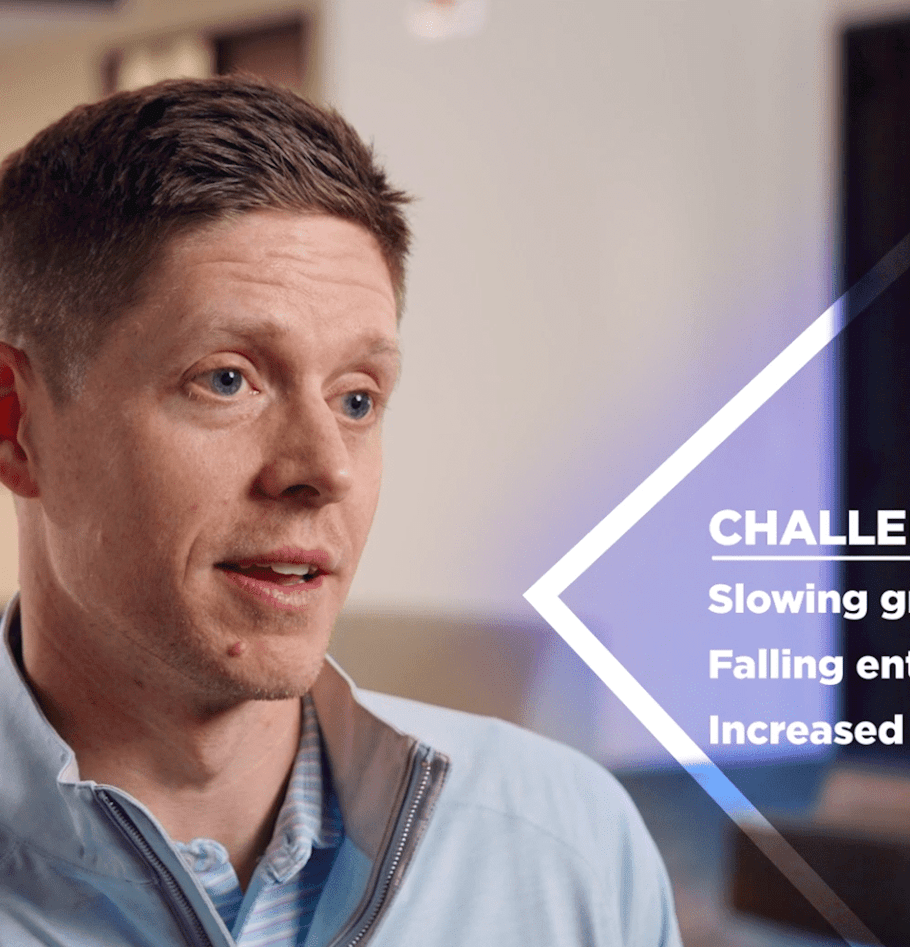Takeaways from the TSIA World Interact Conference: 3 tactics to drive profitable growth
We heard a lot about growth, customer experience, and navigating through uncertain economic conditions. Here are our recommendations.
West Monroe attended TSIA’s World Envision Conference in Las Vegas in October. We spoke with numerous clients about how they’re currently navigating through the uncertainty in the current economic environment. In those chats, a few themes kept popping up:
- A focus on profitability
- Doing more with less
- Increased scrutiny on innovation and investment
To address these challenges, we’ve also identified three tactics that organizations can use to meet their goals—without compromising customer experience. Here’s what we mentioned at the conference.
1. Evolve expansion motion and compensation model to drive growth
Customer Success is continuing to increase the involvement in driving commercial activities. According to a report published by TSIA, The State of Customer Success 2022, ~62% of organizations are including expansion mandates as an objective within their teams. In these organizations, Customer Success Managers (CSMs) are often involved in identifying and driving cross-sell/upsell efforts. CSMs are well-positioned to drive expansion due to:
- Mature relationships with customers (CSMs average 5 to 15 more touchpoints per month per year than sales)
- Strong soft skills (critical when positioning value proposition)
- Clear understanding of their customers’ business and their opportunities for improvement
This creates a few economic benefits. First, CSMs are less expensive than a typical account executive. This means costs to expand/renew are lower when leveraging CSMs.
Second, this motion allows account managers and account executives to focus on landing new logos and driving large, complex deals while building relationships with new stakeholders in the account.
To encourage CSMs to drive expansion, compensation should be structured to reward these behaviors; it should be balanced between driving adoption/retention (ultimately NRR) and expansions. A paper published by TSIA, Digital B2B – What Must Be True, found that ~75% of B2B customers prefer remote human interactions or digital self-service, and about 1/3 of those same respondents are willing to spend up to $500K for a new product or service. To capitalize on this, organizations have begun to explore product- led growth (PLG) models where customers can interact with a freemium product, explore additional capabilities, and purchase features on their own. There are three main benefits from PLG:
2. Leverage technology to reduce costs through Customer 360 and tech touch for all customers
Another common theme raised was how to simplify and optimize a technology business to deliver an exceptional customer experience and drive profitable growth. In TSIA’s newest book, “Digital Hesitation,” they unpack what a complete digital transformation looks like for a technology provider and provided actionable insights to optimize data and deliver a digital customer experience. Here are a few more ways organizations can tackle it:
- Consider incorporating digital elements into CX for all customers. Implement automated features like use case content for an upcoming release, or regularly provide account health information to internal stakeholders. These actions can help reduce costs, maintain a high-quality customer experience, and enable scale.
- Invest/optimize tooling tech stack. There are a set of core technologies that enable post-sales organizations to manage resources, deliver services, and interact with customers—often incorporating ML/AI features to enable prescriptive decision-making. Additionally, there is an emerging market for point solution tools that add targeted capabilities to existing platforms (e.g., data aggregation, improved cross-functional communication and automation of manual, repetitive tasks) or add targeted capabilities existing platforms
- Build a 360-degree view of the customers to understand their holistic experience. This will enable you to coordinate across functions to mitigate churn and drive account growth. Organizations can create a shared portal for sales/customer success to collaborate and share data that provides critical insights around customers, trending issues, and the perception and performance of the product. We recently published a report on the current state of RevOps and how organizations develop and execute a holistic view of their customers across the organization.
3. Accelerate innovation by experimenting with product-led growth
There is a high propensity for buyers of technology to conduct research and engage with a new product largely on their own. A paper published by TSIA, Digital B2B – What Must Be True, found that ~75% of B2B customers prefer remote human interactions or digital self-service, and about 1/3 of those same respondents are willing to spend up to $500K for a new product or service. To capitalize on this, organizations have begun to explore product- led growth (PLG) models where customers can interact with a freemium product, explore additional capabilities, and purchase features on their own. There are three main benefits from PLG:
- Support long tail of customers, typically smaller ARR with simpler needs
- Scalable and cost-effective approach to drive revenue growth
- Generates telemetry data that can be used to:
- Share with sales teams to pursue larger, more complex expansion opportunities
- Share with product to inform delivery and innovation cycles
But organizations are often risk-averse in terms of exploring a growth engine like PLG, particularly if there are no direct competitors in their industry or vertical that are delivering PLG capabilities at scale. One approach to move past this challenge is rapid prototyping. For PLG, this could mean focusing on a subset of small- to medium-sized customers, developing a revenue forecast to continuously monitor and adjust long-term viability of a product, and potentially expanding the PLG model to other customers. We have worked with several clients to implement a PLG strategy that can be leveraged from the ideation to delivery of a product. Learn more about the problems our clients faced and how we helped.

